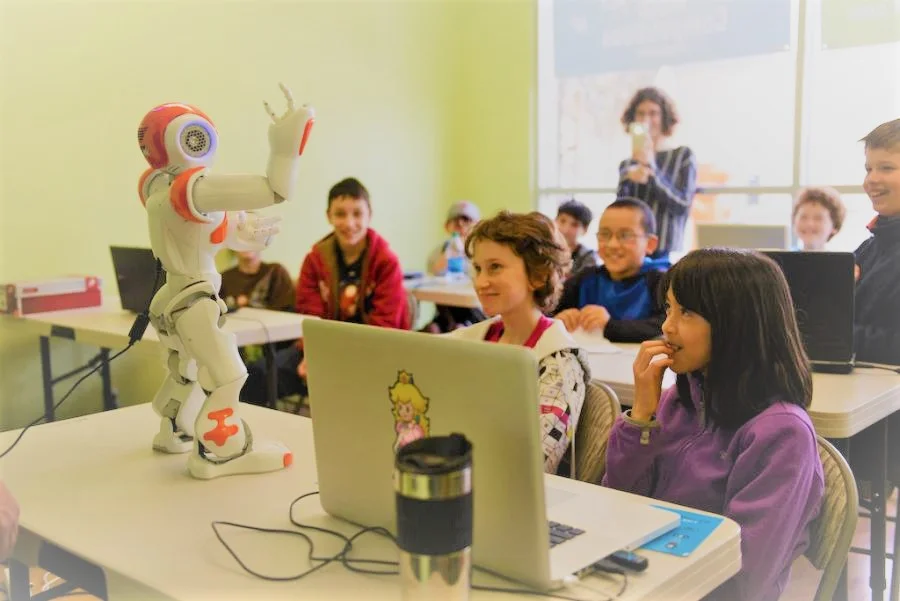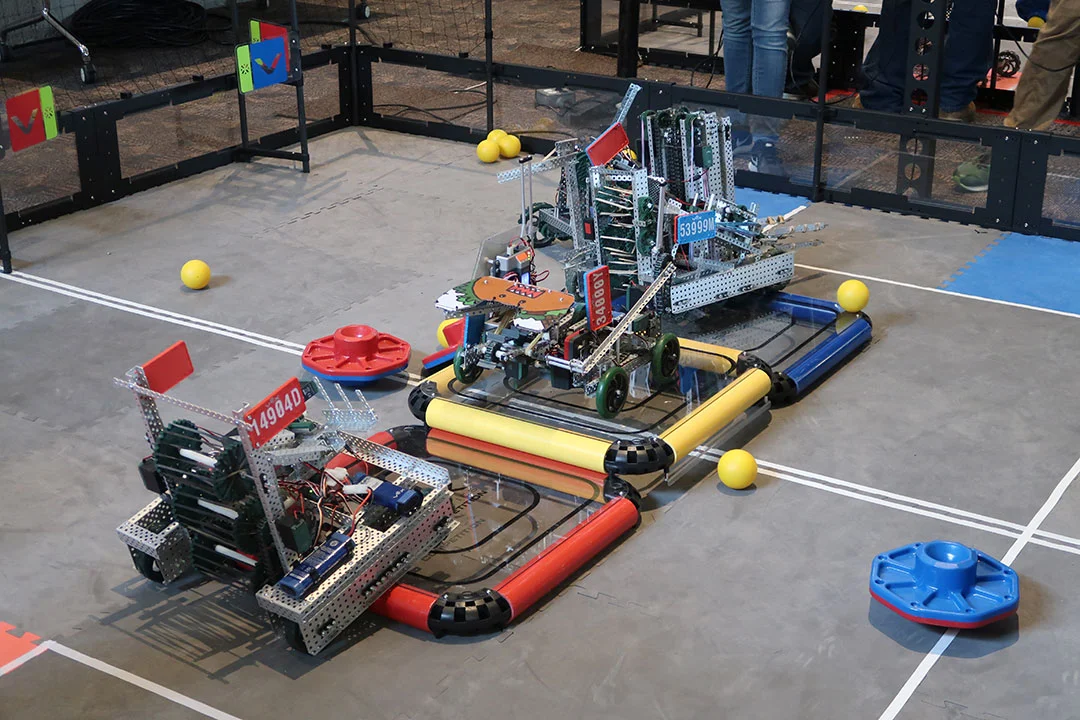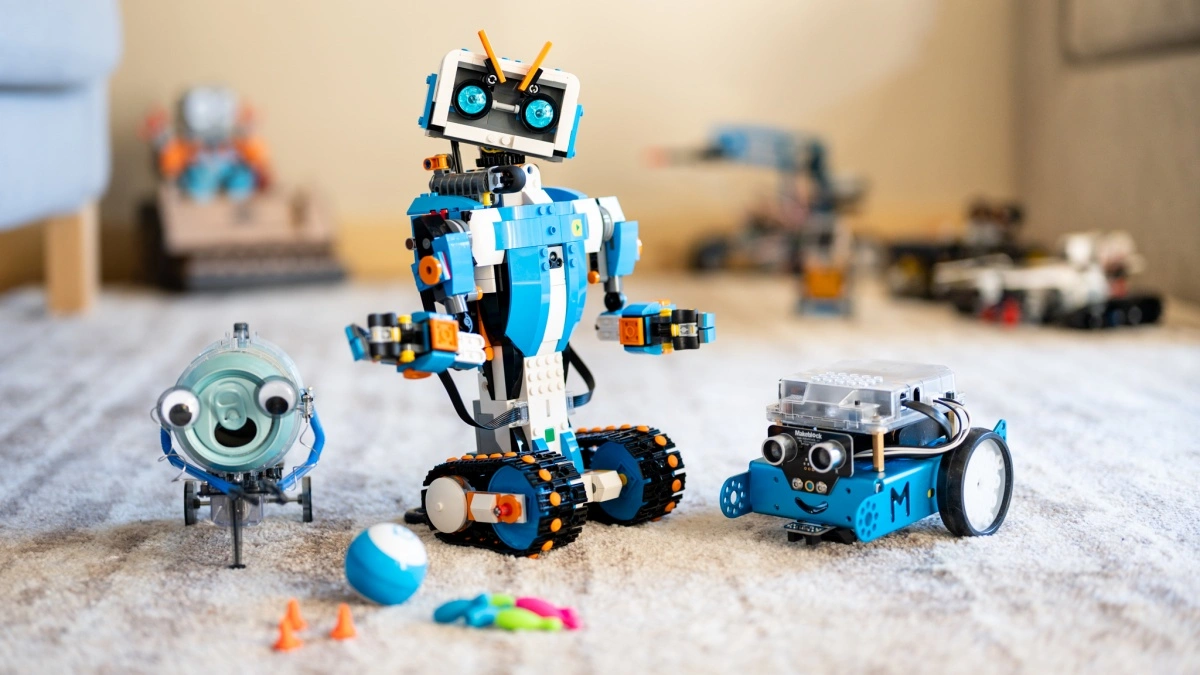

Every child should have time for arts, music, sports, drama, robotics, school newspapers and the like, not to mention recess and play
Chris Gabrieli
Update: This article was last updated on 25th April 2024 to reflect the accuracy and up-to-date information on the page.
People who enjoy books join book clubs, movie enthusiasts join movie clubs, and chess lovers join chess clubs. The purpose is to connect with like-minded individuals who share the same interests and passions and improve skills and knowledge.
Likewise, for those who love robotics, joining robotics clubs presents a unique opportunity to advance STEM education by meeting people pursuing robotics and indulging in hands-on experience in designing, building, and programming robots.
This blog post will explore the benefits of robotics clubs, popular robotics clubs, case studies, etc.
Benefits of Robotics Clubs
When we meet other individuals who share our interests, we exchange and explore ideas together, brainstorm, and assist each other in bringing our ideas to reality. The same happened at the robotics club. Robotics enthusiasts meet, collaborate, and demonstrate their abilities. Robotics clubs also makes robotics for kids fun and boost their passion for robotics. Participating in a robotics club offers many benefits to students some of them are:
1. Benefit of Teamwork
One thing that the students learn instantly is teamwork and collaboration, as they work together to design and build a robot. From delegating tasks, communicating effectively, and supporting each other to achieve a common goal–they develop these valuable skills that will help them in the future.
2. Developing problem-solving skills
The robotics club activities are full of problems that must be solved to progress, and in the process, kids enhance their problem-solving abilities. Students learn to develop innovative solutions when they face technological problems. This is a necessary talent in any STEM career where creativity and problem-solving propel you towards success.
3. Increase Creativity
Without creativity, you cannot survive in the STEM world. Because here all activities are based on creativity. Hence, there are ample opportunities for students to design and build their robots, allowing them to express their creativity and explore their interests.
They can experiment with different designs, sensors, and programming languages, encouraging them to think outside the box and develop unique solutions.
4. Rising Technical Skills
Robotics clubs are hubs of technical skills. Through the club, students gain expertise in utilizing tools, interpreting schematics, programming microcontrollers, and incorporating sensors. These proficiencies have immense significance in various STEM fields, ranging from robotics engineering to software development.
Many popular robotics clubs help students enhance their STEM education and build valuable skills.
Here are a few examples :
1. FIRST Robotics

This one is based on a one-of-a-kind blend of the thrill of sports and the challenges of science and technology. Another highlight of this club is that kids with different skill levels are welcomed. This global robotics competition challenges high school students to design and build robots to compete in various challenges. This program has inspired many students to pursue careers in STEM fields.
Age: 4-18 years
Website: https://www.firstinspires.org/robotics/frc
2. VEX Robotics

VEX Robotics is accessible to all, and the most significant aspect is that it motivates educators from all backgrounds to involve and motivate future STEM problem-solvers! The students can use this platform for hands-on experience in designing and building robots. It is the world’s largest robotics competition, with over 20,000 competition teams in over 60 countries.
Age: 8-14 years
Website: https://www.vexrobotics.com/
3. MoonBattle by Moonpreneur
4. RoboCupJunior
RoboCup Junior is a worldwide robotics competition comprising three challenges: Soccer, Rescue, and Onstage. The competition provides a practical and supportive atmosphere for primary and secondary school students to explore technology while prioritizing teamwork, collaboration, and proficiency in robotics and programming.
Age: 14-19 years (19+ not allowed)
Website: https://www.robocup.org/
5. Botball
Botball tasks students with designing and constructing self-sufficient robots to compete in diverse challenges. Intended for middle and high school students, this program provides an inquiry-based, hands-on experience that fosters a proficient, innovative, and disciplined workforce with leadership and teamwork expertise.
Age: 12-16 years
Website: https://www.kipr.org/botball
6. Lego Robotics

Lego Robotics is a popular program for younger students that teaches them the basics of robotics and programming. Students use Lego bricks and sensors to build and program robots to complete various challenges.
Age: 4-16 years
Website: https://www.firstlegoleague.org/
Case Studies
Many successful robotics clubs have enhanced STEM education for students.
One example is the RoboRavens team at Earl of March Secondary School in Ottawa, Canada. This team has won multiple awards at robotics competitions, and many of its members have pursued careers in STEM fields.
Another example is the Space Cookies team at NASA Ames Research Center in California. This all-girls team has won numerous awards for its innovative designs and has inspired many young girls to pursue STEM careers. They have even developed a STEM outreach program to encourage other young girls to participate in robotics and science.
While selecting a club, you can consider the following:
1. The club should have a clear mission and purpose. This could prepare students for robotics competitions, expose them to STEM careers, or simply teach them robotics as a fun and engaging hobby.
2. A strong leadership team is a must. This could include educators, parents, or industry professionals who can provide guidance and mentorship to students. The leadership team should have a clear vision for the club and be committed to its success.
3. The club should offer engaging activities and competitions such as building and programming robots for competitions like FIRST Robotics or VEX Robotics or simply creating robots for fun challenges like obstacle courses or sumo wrestling.
Conclusion
Robotics clubs offer a unique opportunity to enhance STEM education. Through robotics clubs, students can learn teamwork, problem-solving, creativity, and technical skills, all essential in STEM careers.
Learn more about the exciting world of robotics and enroll your children for the Robotics competition. Help them to display innovative project ideas and witness their enthusiasm as the robots start operating successfully.
Want to make your child future-ready with Robotics? Moonpreneur offers a tailor-made program. Reserve a spot in our free 60-minute workshop today and introduce them to the amazing world of robotics and innovations!

























